For seven years, Melbourne was my home airport. I’ve flown in and out of it more times than I can remember, and have a bit of a love/hate relationship with the place.
I love that it operates 24/7 and the domestic and international terminals are all within the one complex, so transferring from international to domestic is a breeze, unlike in Sydney, Brisbane and Perth.
However I’ve always been frustrated by how far it is from the CBD (especially compared with Sydney), and most of all, how there’s no train station at the airport, so there’s no rail link to the city, or anywhere else. I travel through Western Europe regularly and would be shocked to arrive in a large, modern city to find there is no rail link to the city.
There are four main terminals at Melbourne Tullamarine Airport:
- Terminal 1 for domestic Qantas flights
- Terminal 2 for all international flights
- Terminal 3 for Virgin Australia domestic and Regional Express flights
- Terminal 4 for Jetstar and Tigerair domestic flights

The terminal buildings are all interconnected, with Terminal 2 being located in between Terminal 1 and 3, all under the same roof. It’s a very easy walk between these terminals, with certain domestic and international gates located very close together.
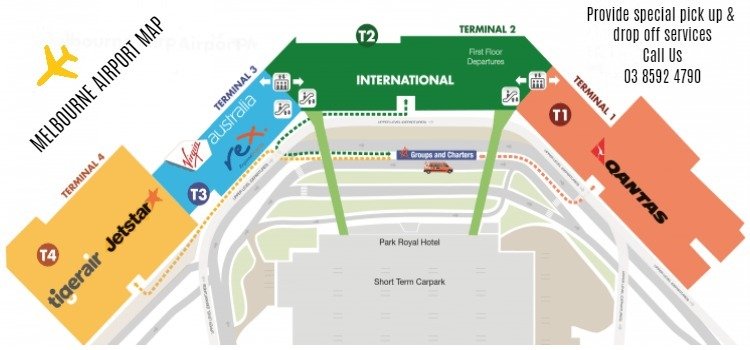
Swinging Gates
Little old Adelaide Airport, which is where I was born and raised, operates a system of ‘swinging gates.’
The terminal design is very simple – it is one single rectangular building with all gates in a single line down one side of the building (around 25 or so in total). Virgin flights operate at one end, Qantas flights down the other. Adelaide has very few international flights, so a few gates in the middle of the terminal building (18, 19 and 20 per the image below), are used for international flights at various parts of the day as required.
This is simply done by using moveable glass walls to either open the gates to the rest of the terminal so they can be used for domestic, or closing them off to be used for international.
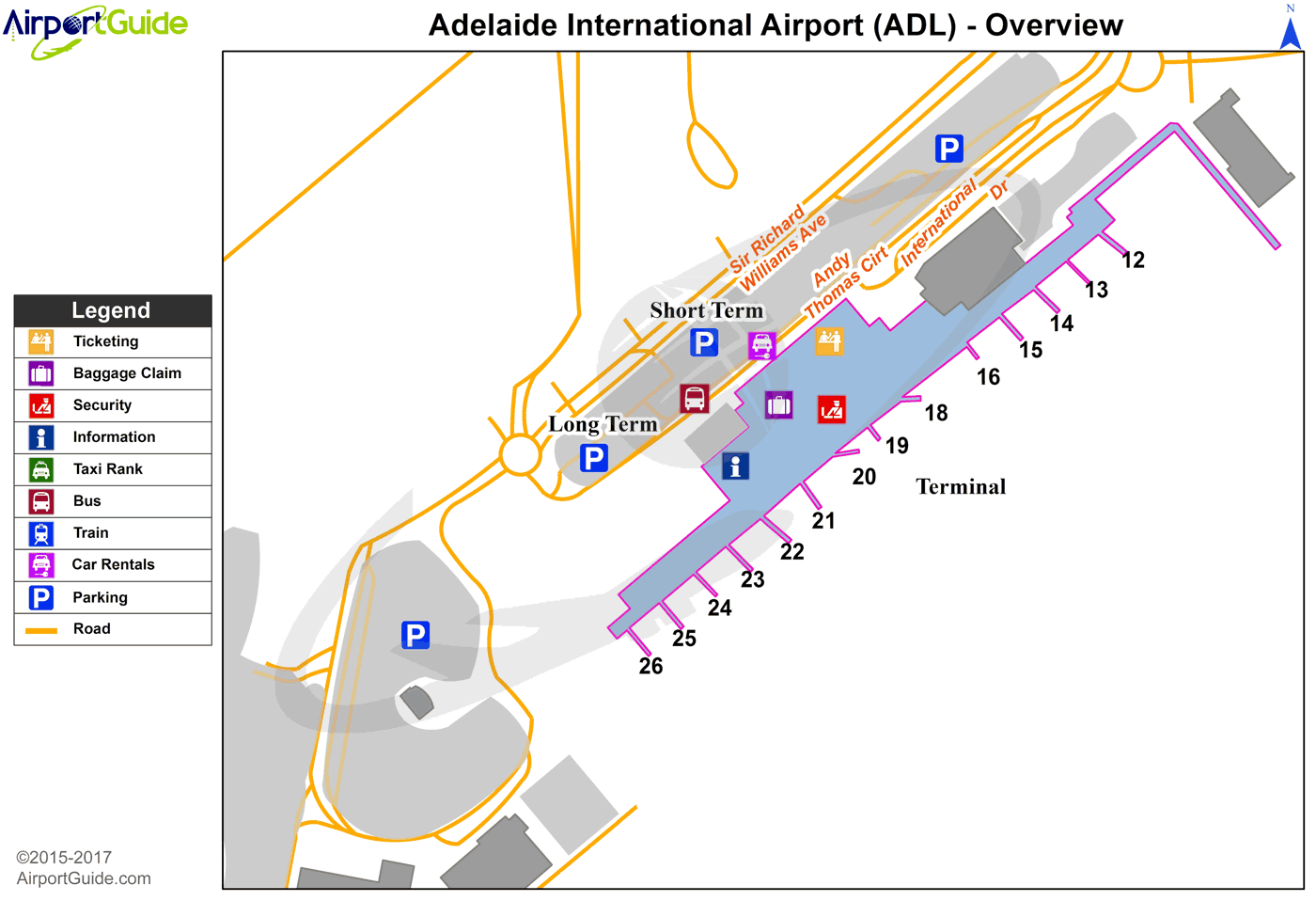
It’s a bit of an odd concept, but for a small airport it works very well and is surprisingly simple.
Asian flights to Adelaide generally arrive and depart in the mornings, while Middle Eastern flights arrive and depart in the evenings. In between these times, these gates can be opened up to the domestic terminal, and used for additional domestic flights.
Adelaide Airport has been using this system since the current airport was built in 2005, and the airport has won many accolades for it.
Melbourne Airport has decided to use a similar concept to convert some domestic gates in both Terminals 1 and 3 into dual use domestic/international gates. They plan to convert three by 2020, with a further five to be converted next decade.
Presumably the gates to be converted will be those closest to the international terminal, and walkways from international will be built to the domestic gates so they can be closed off, remain completely sterile and allow passengers to board after clearing passport and international security control. There’s no suggestion international passengers will mix with domestic passengers like I have seen occur at some US airports.
Melbourne Airport Planning Executive Michael Jarvis has said of the decision:
What these projects are intended to do is meet that international growth challenge by using latent or spare capacity in the domestic terminals. It will require some surgery to the buildings but by augmenting the existing domestic piers with segregated corridors and vertical transport at the gate lounges, we can add the infrastructure to existing gates rather than building new ones.
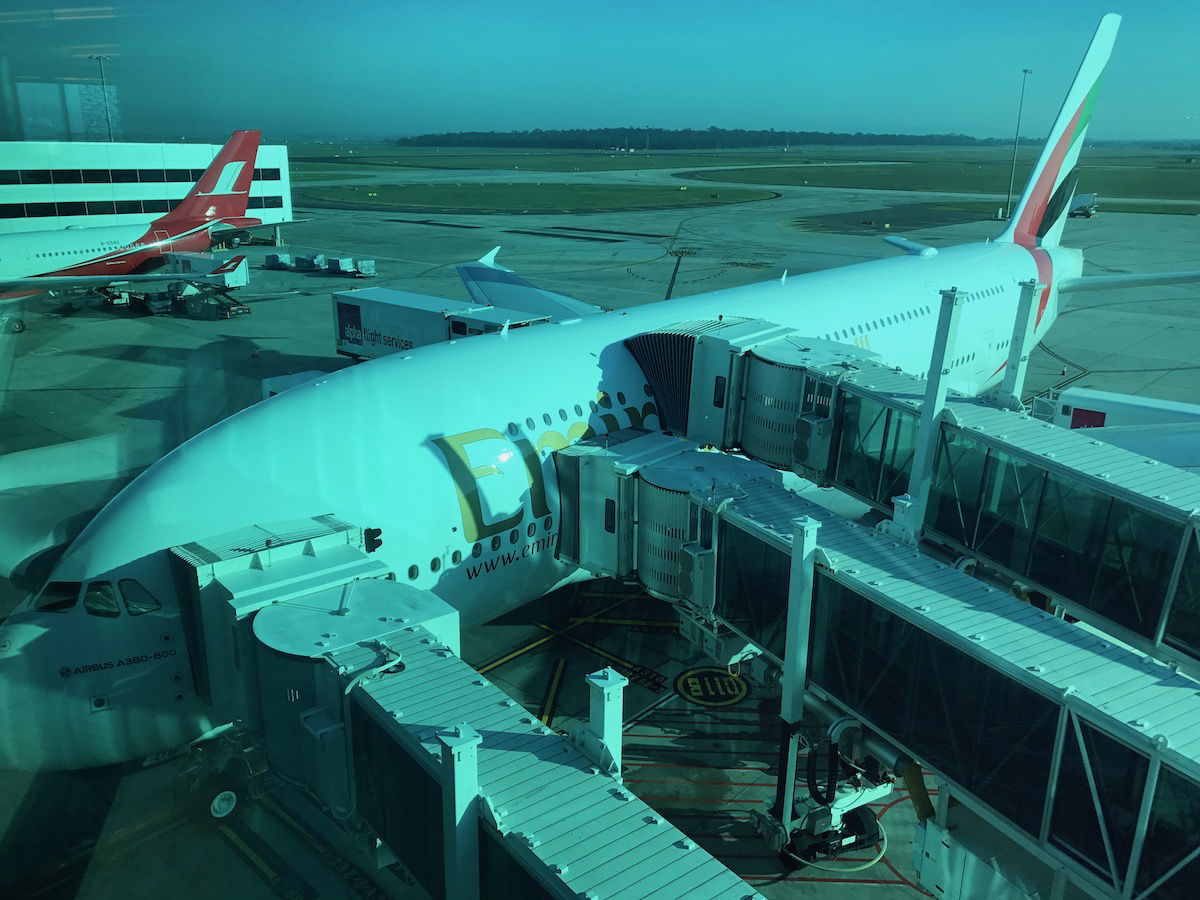
Bottom line
This is a smart solution to capacity constraints at Melbourne Airport, and utilises the airport’s convenient terminal design.
I really don’t like those airports where domestic and international terminals are separated by a lengthy bus ride, as they make transfers very difficult, and for all of Melbourne Airport’s transport faults, this is a great idea that’s already worked well.
Do you think domestic and international gates should be dual use to maximize efficiency and capacity?
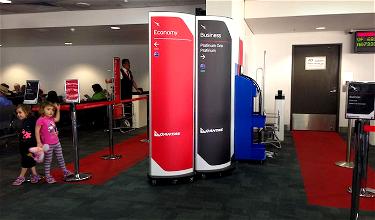


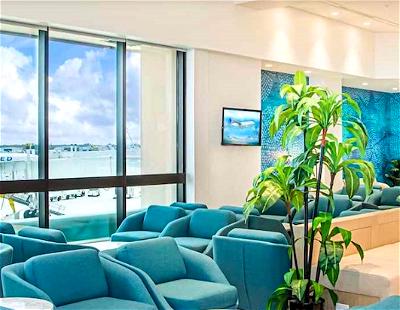
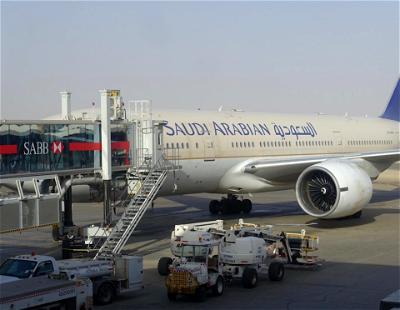
Another significant change: the passenger drop-off zone is likely going to be moved from immediately outside check -in to an area behind the Parkroyal ( formerly Hilton) Hotel. Often it is difficult to be able to stop as it is now and consequently people double park.
@Nathan , yes they have 10 billion for the train, looking for a further 4 billion. Construction will start in 2022, take at least 6 years...why I reckon...
Another significant change: the passenger drop-off zone is likely going to be moved from immediately outside check -in to an area behind the Parkroyal ( formerly Hilton) Hotel. Often it is difficult to be able to stop as it is now and consequently people double park.
@Nathan , yes they have 10 billion for the train, looking for a further 4 billion. Construction will start in 2022, take at least 6 years...why I reckon it will take 10 years ( minimum) to get it.
The Sydney/Melbourne population. Yes, Salt suggests Melbourne's permanent population will pass Sydney in 2030 or so; that doesn't take into account a "temporary" student population of 550,000 ( ie several hundred thousand more than Sydney); consequently many people believe that Melbourne is bigger NOW. Most of those students will never leave.
The only reason it matters is that the infrastructure has not kept pace with population growth, including transport ( and ignoring the risible effort to promote Avalon as the second airport).
@James: A number of small European airports have similar concepts to temporarily increase capacity in either the Schengen or the non-Schengen area of the terminal. In most cases it's a "Schengen area at one end of the terminal, non-Schengen at the other end of the terminal, and the central area can be open to either the Schengen area or the non-Schengen area" deal.
IMO quite interesting. Particularly small airports can profit from such an arrangement.
I fly regularly between MEL and BNE dont ever try leaving Melbourne CBD at 4pm as it can easily take over 90 mins to drive to the airport the amount of times ive had to run to the VA gate isnt funny
The new pier at OSL has dual floor level operations for all gates. The upper floor is used for domestic departures and the lower floor for international departures. This facilitates the use of aircrafts that do international and domestic flights back to back, e.g. an aircraft arrives as a domestic flight, while its next flight is international and vice versa, which is common for SAS and Norwegian flights.
ADL has about 16 gates - they're numbered from 10, not 1.
@Paolo -
"The train link will happen in the next 10 years" :
Actually no; both the state and federal governments have already each recently promised AUD$5 billion towards finally building it.
"The Skybus service is OK for $20 (USD$15), takes 25 minutes to the CBD" :
Again, no; it is AUD$18 each way, and normal off-peak journey is 20 minutes (although in all fairness, I have also taken several in peak where...
@Paolo -
"The train link will happen in the next 10 years" :
Actually no; both the state and federal governments have already each recently promised AUD$5 billion towards finally building it.
"The Skybus service is OK for $20 (USD$15), takes 25 minutes to the CBD" :
Again, no; it is AUD$18 each way, and normal off-peak journey is 20 minutes (although in all fairness, I have also taken several in peak where it hasn't taken a single minute more than 20).
"This year Melbourne will become Australia’s largest city, overtaking Sydney" : absolutely not. It is predicted by Australian demographer Bernard Salt to do that around 2030, so you're jumping the gun a little there, mate.
YYZ T1 has swing gates between transborder and domestic as well as transborder and international. PVG T2, like BOM T2, has two-level concourses with swing use of gates for either domestic or international. As many said, this is very common in European, Canadian, Brazilian, Indian, and probably other countries with significant domestic aviation markets.
In the US, given the shared departure concourse, the only gates which can be called truly "swing" are gates equipped...
YYZ T1 has swing gates between transborder and domestic as well as transborder and international. PVG T2, like BOM T2, has two-level concourses with swing use of gates for either domestic or international. As many said, this is very common in European, Canadian, Brazilian, Indian, and probably other countries with significant domestic aviation markets.
In the US, given the shared departure concourse, the only gates which can be called truly "swing" are gates equipped with sterile access to the international arrivals area. Those exist in international terminals such as all terminals at JFK, DFW terminal D, SFO International Terminal, etc. (all of which can handle both international and domestic flights).
I believe LAX TBIT does not have domestic flights departing or arriving, but I could be wrong. I'm also not sure if all gates at LAX T2 are swing gates. Some gates in T4 and T5 are swing gates, with corridor and/or bus access to the TBIT arrivals area.
"Little old Adelaide Airport, which is where I was born and raised"
James! You were birthed in Adelaide Airport and then grew up there?
LOL jks
AdamR lives in a trailer park
As a US reader, I first thought it was odd that you think this was novel but it makes me realize that we’re the oddballs here. With no departure immigration requirements, we really don’t have the departure segregation that most countries have. And most US airports do not have gates solely for International arrivals. Ramps and doors directing arriving passengers to immigration or to the dometic gate area let’s a gate handle an arrival from London or Los Angeles.
James, Rex flies out of T4.
Amsterdam has this in the d-gates, where the bottom level is for ex-schengen and at the top level, you can take escaletors down to the same gate area thats sealed of so you can depart intra schengen.
this way you can depart on a charter to spain next to usa flight.
In brussels they build a border patrol station on the end of the a pier wich is shut of in the morning for africa flights.
Also very common in Europe to separate Schengen/Non-Schengen boarding areas for the same gate stand. VIE, FRA, MUC are ones that immediately spring to mind, where Schengen is on one level and non-Schengen on another. Given the MEL release refers to use of screened-off walkways and vertical transports, that suggests there will be some level of vertical separation as well.
It's pretty common in US, most international terminal gates can board domestic and international flights.
@James:
Perhaps. But if you're writing for a travel blog about (luxury) international travel, one would think a prerequisite would be (luxury) international travel, to include having visited at least one or two of the many commonly-traveled airports that routinely utilize this sort of setup and have done so for decades. I'd likewise critique someone writing for an automotive blog that marveled at the wonders of the internal combustion engine and pneumatic tires.
That said,...
@James:
Perhaps. But if you're writing for a travel blog about (luxury) international travel, one would think a prerequisite would be (luxury) international travel, to include having visited at least one or two of the many commonly-traveled airports that routinely utilize this sort of setup and have done so for decades. I'd likewise critique someone writing for an automotive blog that marveled at the wonders of the internal combustion engine and pneumatic tires.
That said, your contributions have been great and I've enjoyed them thouroughly. Don't let us armchair quarterbacks detract you too much.
@ AdamR - I've visited 60 countries, I hope that qualifies me as an experienced traveller ; )
Also Rio de Janeiro "Rio Galeao" (GIG) have the same concept doors, and this airport is from the 70's
This is not novel. It happens all over the world. I lived in Lima, Peru for many years, and the terminal there has this same feature. So does Sao Paulo, Brazil. So do many others. Not quite sure why an entire post was written about something that is rather basic.
@ Jason, others, it's novel to someone who hasn't been to every airport in the world
Is this really that novel? I ask because, as henry LAX mentioned, ORD does this, as do most larger US airports. Instead of glass/movable walls, there's simply a ramp up to the Departures Level and one down to Immigration and the Arrivals Level for most gates. Doors just outside the jetway direct pax up or down depending on the origin of the inbound flight. Perhaps it's because the US doesn't have Passport Control upon exiting...
Is this really that novel? I ask because, as henry LAX mentioned, ORD does this, as do most larger US airports. Instead of glass/movable walls, there's simply a ramp up to the Departures Level and one down to Immigration and the Arrivals Level for most gates. Doors just outside the jetway direct pax up or down depending on the origin of the inbound flight. Perhaps it's because the US doesn't have Passport Control upon exiting that this seems commonplace, but otherwise I'm unsure of the hoopla for a concept that's been in practice for years. Am I missing something?
Swing gates are not novel or innovative. They are quite common across the globe.
Get out more.
If only Melbourne Tullamarine could add more elevators for luggage carts. When you arrive on an international flight, collect your luggage, clear customs and then proceed to the domestic terminal there is only one elevator to push your cart to re-check in your luggage upstairs. On any given morning there can be a very long line of people lined up for the one elevator to get upstairs. Mind boggling indeed!
As others have mentioned, this is common in Canada due to the requirement to segregate pre-cleared US departures. (I'm surprised YYZ was not specifically mentioned because they actively use swing gates).
At my home airport (Ottawa), the capability to expand the transborder departure area with sliding glass walls was built in when the current terminal was constructed about 15 years ago, but I don't think it has ever actually been used.
Others have mentioned Montreal (YUL) and Vancouver (YVR). Edmonton (YEG) is another Canadian airport that does this to expand/contract their U.S. departures section and they have a system where international flights can be gated in domestic gates due to separation barriers that can easily funnel international arriving passengers into the separated hallways that lead to Canadian immigration.
Most international airports in Brazil have been doing thsi for decades, especially when they were run by state-owned infraero and operated over capacity.
Some of brazil's largest airports like Rio de Janeiro and Sao Paulo-Guarulhos did this, and i think Guarulhos still does in Terminal 2, that has a shared area for Latam Domestic flights and some international flights of carriers like Delta, Gol, TAAG, Copa, and some others. It was exactly the same done...
Most international airports in Brazil have been doing thsi for decades, especially when they were run by state-owned infraero and operated over capacity.
Some of brazil's largest airports like Rio de Janeiro and Sao Paulo-Guarulhos did this, and i think Guarulhos still does in Terminal 2, that has a shared area for Latam Domestic flights and some international flights of carriers like Delta, Gol, TAAG, Copa, and some others. It was exactly the same done in Adelaide Airport. There were some glass walls with doors around the terminal, that would switch between domestic and international operations depending on demand.
@James : the US concept makes dom-to-intl transfers quite seamless, but intl-to-dom a major PITA.
ORD is the absolute worst offender of this, where all airlines must dock inbound INTL flights at T5 for clearing immigration and customs, then (1) the pax take monorails to T1 (UA) T2 (DL and misc) T3 (AA) for domestic flights, and (2) the airport has to tow all those planes back to T1/T3 for departures.
Their new plan...
@James : the US concept makes dom-to-intl transfers quite seamless, but intl-to-dom a major PITA.
ORD is the absolute worst offender of this, where all airlines must dock inbound INTL flights at T5 for clearing immigration and customs, then (1) the pax take monorails to T1 (UA) T2 (DL and misc) T3 (AA) for domestic flights, and (2) the airport has to tow all those planes back to T1/T3 for departures.
Their new plan is to co-locate Star and oneworld in their own respective terminals, and add FIS to both of them to streamline this dreadful transfer process, but allah knows how long that will take for them to actually complete the project
@VT-EXU - I'm talking about the integrated new T2 terminal in Mumbai, where full-service domestic carriers (Air India, Jet Airways, Vistara) and international airlines all operate from the same terminal. In that terminal, domestic and international departures are on two separate levels, but extend through the majority of the terminal so most gates are accessible from both levels, lending to the "swing gate" model
FRA (and likely many other airports in Schengen) have a similar concept : by segregating Schengen and non-Schengen departures onto 2 floors, they can re-use lots of gates for either purpose. FRA's example at T1 are the A/Z gates - A for Schengen, and Z for non-Schengen.
YVR's glass doors could move around a bit to shift some gates around for demand, but FRA's config is that every single of those dual-level gates could simultaneously...
FRA (and likely many other airports in Schengen) have a similar concept : by segregating Schengen and non-Schengen departures onto 2 floors, they can re-use lots of gates for either purpose. FRA's example at T1 are the A/Z gates - A for Schengen, and Z for non-Schengen.
YVR's glass doors could move around a bit to shift some gates around for demand, but FRA's config is that every single of those dual-level gates could simultaneously be used for either purpose at all times (the first half is A+Z second half becomes A-only)
@AVS Speaking of BOM, isn't it difficult to get between the terminals at Santacruz and Sahar by road? They are physically disjoint.
Guarulhos does this as well.
Based on your definition of swing gates; isn't that in literally all US international airports, since we don't have departure immigration here?
@ chub - when I last few from the US at JFK I noticed domestic and international flights left from the same gates. That is not how it happens in Australia.
DUB does this as well, gates are shut off in the morning to allow for US bound flights, the area then is effectively In America seeing as you've cleared US immigration.
Once these have taken off the swing gates are opened again for European flights.
You're too young to remember Essendon, Melbourne's airport before Tullamarine; it involved walking across the tarmac and climbing the stairs, for international as well as domestic ( like airports everywhere pre jet bridges).
The train link will happen in the next 10 years, only 50 years behind schedule.
Meanwhile the skybus service is ok for $20 ( USD 15), takes 25 minutes to the CBD. Or cab at $70 ( usd 50), but...
You're too young to remember Essendon, Melbourne's airport before Tullamarine; it involved walking across the tarmac and climbing the stairs, for international as well as domestic ( like airports everywhere pre jet bridges).
The train link will happen in the next 10 years, only 50 years behind schedule.
Meanwhile the skybus service is ok for $20 ( USD 15), takes 25 minutes to the CBD. Or cab at $70 ( usd 50), but it's poor value for a solo traveller.
This year Melbourne will become Australia's largest city, overtaking Sydney, at pushing 5 million; but it's still poorly served by international flights ( Qantas being the main culprit in that regard).
@Debit get over it. I still can't find terminal D at Logan, should have been easily located between C and E????
YVR is also very good at this, but even more complicated.
YVR has three sides, US, domestic, and International, and US and International have some strange swing gates situation. For morning rush US traffic, those gates open for many AA, UA, DL, WS, AC, AS flights, and at late night they can isolate specific gates for fifth freedom flights: CX HKG-YVR-JFK, PR MNL-YVR-JFK, CZ CAN-YVR-MEX. And sometimes some food options become inaccessible when you fly certain times.
This happens in many airports, notably my home airport of Bangalore (and several other newish terminals in India). In Mumbai, the new terminal has 2 levels for all gates, an international and domestic level. All international gates can also be accessed from the domestic level, so during the day when international flights are fewer in number, the domestic level is opened, and in the night the international level is opened.
@ssss Same in YUL, international gates 56, 58 and 60 can become US gates from the pre-cleared area
I'm shocked Terminal 2 is located between Terminal 1 and Terminal 3. That is just groundbreaking news!
This sounds similar to the International and transborder gates at YVR. At certain times of the day, glass walls move around and allow certain Int’l gates to be used by US-bound flights which have been pre-cleared
I was there a few weeks ago and the bus from the Southern cross station was great. Comfy, tons of space for luggage... I though it was a great solution. Price was reasonable to. Mind you my flight was late in the evening, the service might be more crowded in peak hours. I would usually take a cab and it would be expensive and there was always a situation a the airport line up (cabs trying to cut the line and such...)